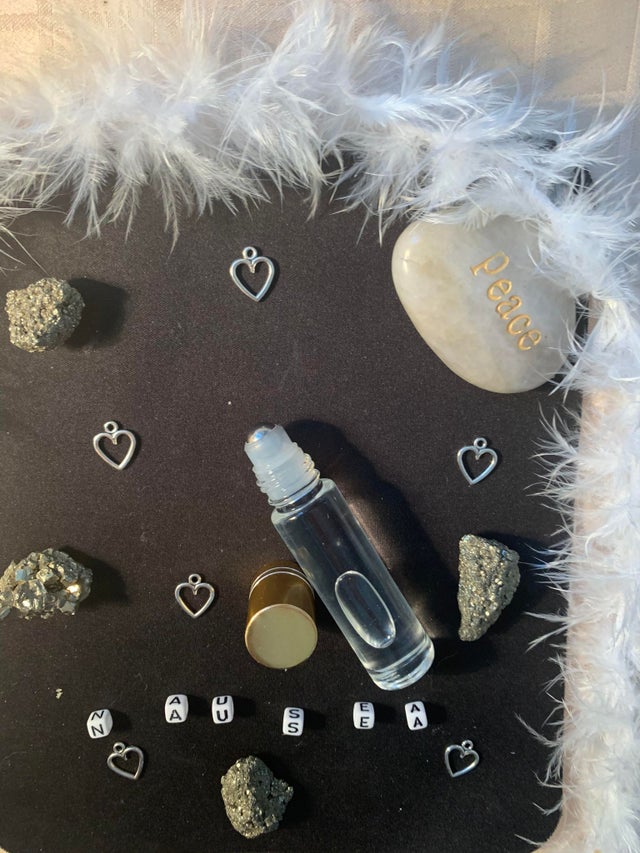- SHOP
- >
- ESSENTIAL OIL ROLLERS 10 ML
- >
- NAUSEA ESSENTIAL OIL ROLLERS
NAUSEA ESSENTIAL OIL ROLLERS
Nausea
10 ML Rollers
GINGER
PEPPERMINT
Where Is the Best Place on the Body to Apply Essential Oils?
There is no single perfect place on the body to apply essential oils.
- If it’s a localized issue like stomachache or sore muscles, then apply the essential oils directly to the part of the body where the issue is occurring.
- However, if it’s a more generalized issue like lack of focus, trouble sleeping, or anxiety, then apply essential oils at your pulse points: wrists, temples, behind the ears, neck, chest, or inner elbow.
- Pulse points are the parts of the body where major arteries run closest to the skin.
- Applying essential oils at pulse points gets the essential oils into the bloodstream the fastest, and you start feeling the benefits of the essential oils sooner.
Where to Apply Essential Oils for Seasonal Allergies
When seasonal allergies flare up, apply essential oils to the pulse points behind your ears as well as your inner wrists.
Then rub wrists together, raise wrists to just below your nose, and inhale deeply.
By using both topical application and aromatherapy (breathing oils in), the essential oils will enter your bloodstream more quickly and your seasonal sneezing and itchy, watery eyes should lessen.
GINGER ESSENTIAL OIL
Relieves Anxiety
When used as aromatherapy, ginger essential oil is able to relieve feelings of anxiety, anxiousness, depression and exhaustion. The warming quality of ginger oil serves as a sleep aid and stimulates feelings of courage and ease.
Ginger oil is believed to treat emotional problems like fear, abandonment, and lack of self-confidence or motivation.
How to Use Ginger Essential Oil
To improve blood circulation and heart health, rub one to two drops of ginger essential oil over the heart twice daily.
For muscle and joint pain, rub two to three drops of the oil on the needed area twice daily.
To boost mood and feelings of courage, add two to three drops to a diffuser or inhale twice daily.
For nausea, diffuse two to three drops of ginger oil or apply one to two drops over the stomach.
For low libido, diffuse two to three drops of ginger oil or apply one to two drops to the feet or lower abdomen.
To aid digestion and get rid of toxins, add two to three drops of ginger oil to warm bath water.
To relieve respiratory conditions, drink ginger tea or add one drop of ginger essential oil to green tea twice daily.
To treat vomiting, add one drop of ginger oil to a glass of water or cup of tea and drink slowly.
For cooking, start with a small dose (one or two drops) and add it to any meal that calls for ginger.
PEPPERMINT ESSENTIAL OIL:
Is one of the most versatile essential oils out there. It can be used aromatically, topically and internally to address a number of health concerns, from muscles aches and seasonal allergy symptoms to low energy and digestive complaints.
It’s also commonly used to boost energy levels and improve both skin and hair health.
It’s no wonder why peppermint oil is one of the most popular essential oils in the world and why I recommend that everyone has it in his or her medicine cabinet at home.
What Is Peppermint Oil?
Peppermint is a hybrid species of spearmint and water mint (Mentha aquatica). The essential oils are gathered by CO2 or cold extraction of the fresh aerial parts of the flowering plant.
History
Not only is peppermint oil one of the oldest European herbs used for medicinal purposes, but other historical accounts date its use to ancient Japanese and Chinese folk medicine.
Uses and Benefits
It has cooling, invigorating and antispasmodic properties. Peppermint oil is especially helpful in alleviating a tension headache.
Researchers found that peppermint oil, eucalyptus, capsaicin and other herbal preparations may be helpful because they work as topical analgesics.
Peppermint aromatherapy can help unclog your
sinuses and offer relief from a scratchy throat. It acts as a refreshing expectorant, helping open your airways, clear mucus and reduce congestion.
It also is one of the best essential oils for colds, the flu, cough, sinusitis, asthma, bronchitis and other respiratory conditions.
Peppermint oil have antimicrobial, antiviral and antioxidant properties, meaning it may also help fight infections that lead to symptoms involving the respiratory tract.
Seasonal Allergy Relief
Peppermint oil is highly effective at relaxing muscles in your nasal passages and helping clear out the muck and pollen from your respiratory tract during allergy season. It’s considered one of the best essential oil for allergies because of its expectorant, anti-inflammatory and invigorating properties.
It helps boost your energy levels on long road trips, in school or any other time you need to “burn the midnight oil.”
The peppermint oil group also showed a significant increase in the amount of air that is exhaled from the lungs, peak breathing flow rate and peak exhaling flow rate. This suggests that peppermint may have a positive effect on the bronchial smooth muscles.
Peppermint for headaches has the ability to improve circulation, soothe the gut and relax tense muscles. All of these conditions can cause tension headaches or migraines, making peppermint oil one of the best essential oils for headaches.
Repels Bugs Naturally
Unlike us humans, a number of little critters hate the smell of peppermint, including ants, spiders, cockroaches, mosquitos, mice and possibly even lice. This makes peppermint oil for spiders, ants, mice and other pests an effective and natural repelling agent. It may also be effective for ticks.
- Peppermint oil is known for its cooling, invigorating, expectorant, antimicrobial, antispasmodic, energy-boosting and pain-relieving properties.
- It is one of the oldest European herbs used for medicinal purposes, with its top uses including pain relief, respiratory aid, allergy relief and increased energy.
